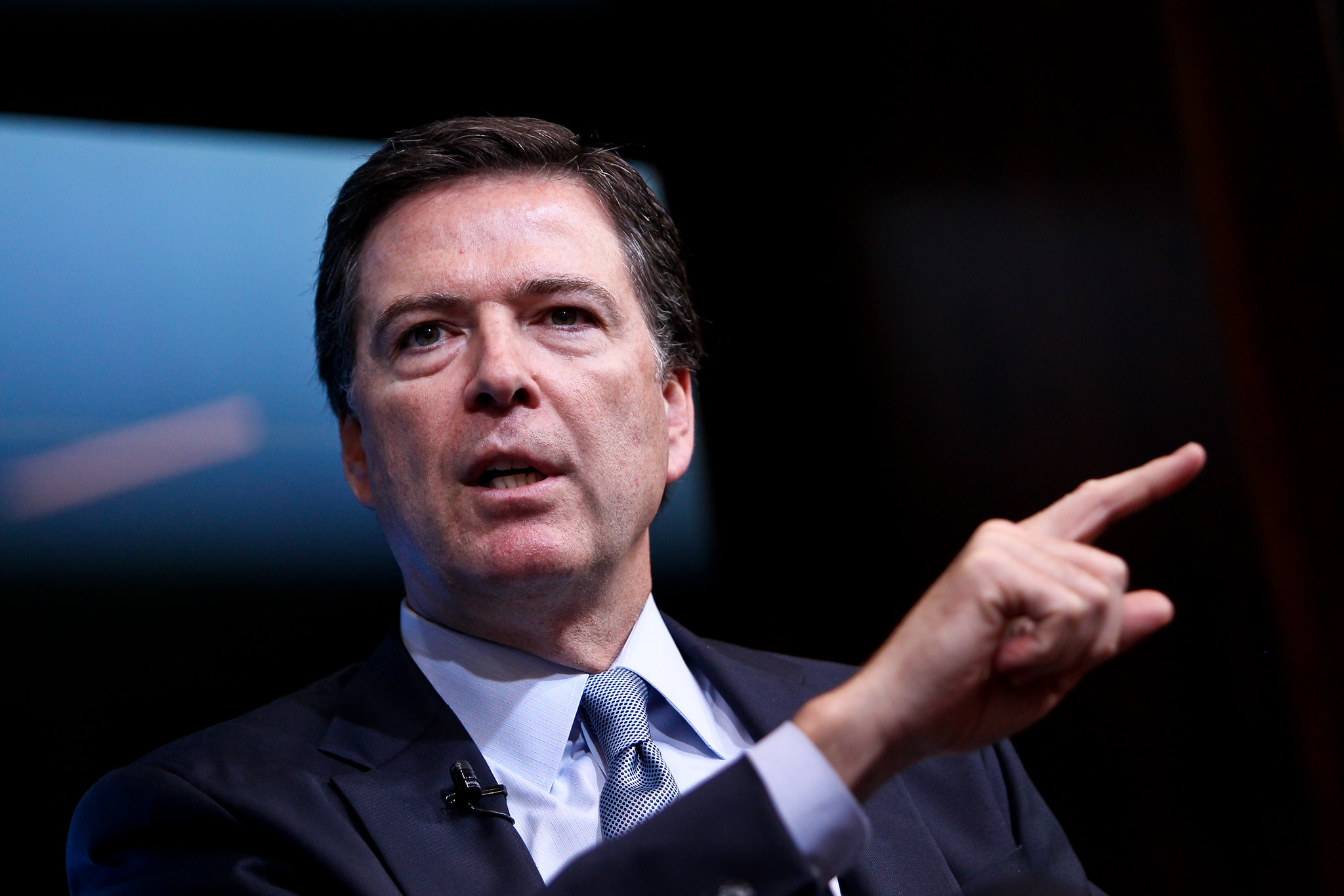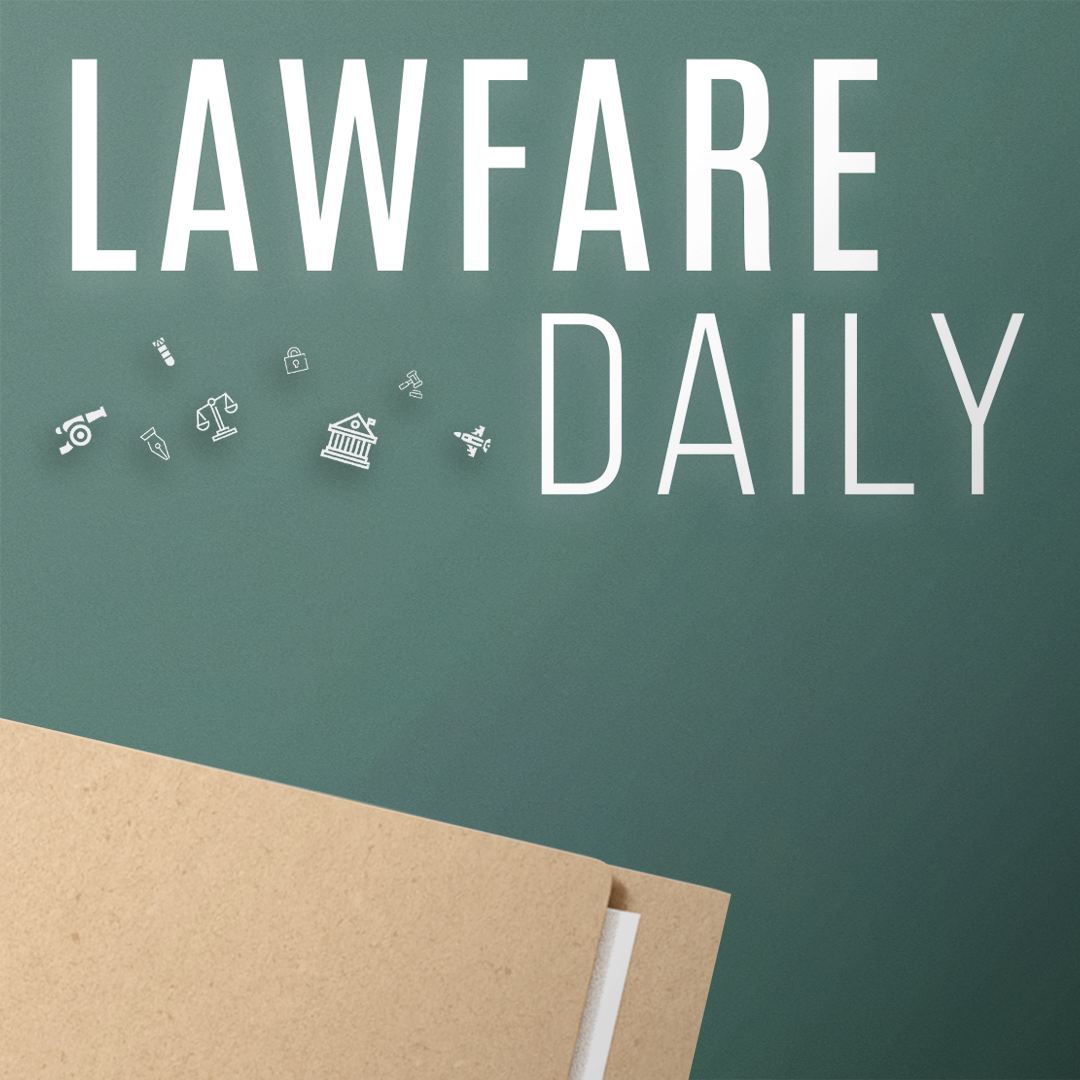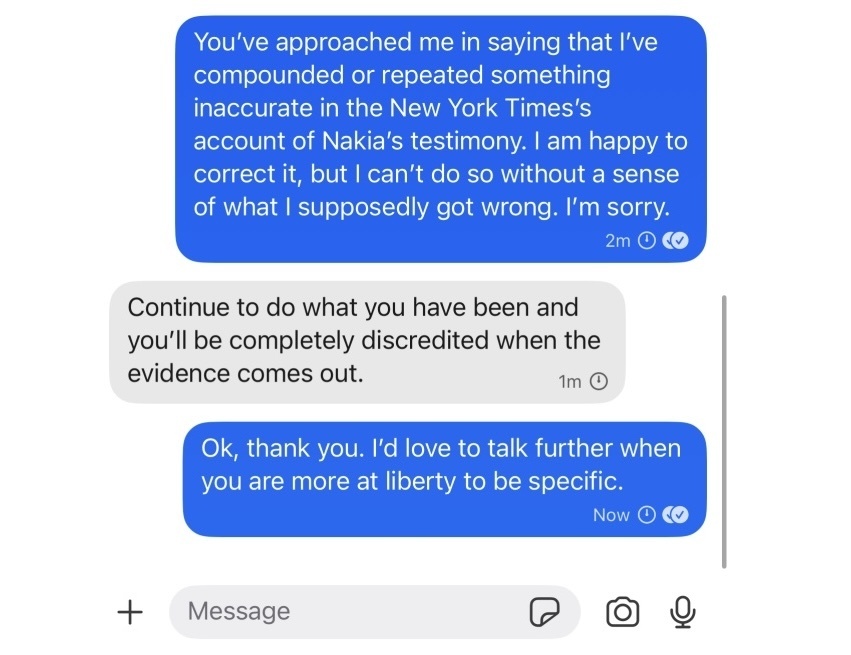The Situation: James Comey Is Just Asking Questions

Published by The Lawfare Institute
in Cooperation With

The Situation on Wednesday asked how much less free we are today than we were a year ago—and contemplated how to calculate the loss.
Yesterday, former FBI Director James Comey filed his second wave of motions in his criminal case in the Eastern District of Virginia. Comey had already filed two motions to dismiss:
- A motion to dismiss because the government is engaged in a vindictive and selective prosecution of him—a motion that includes a document with a 60-page-long list of links detailing the president’s history of hatred for the defendant; and
- A motion to dismiss on grounds that Interim U.S. Attorney Lindsey Halligan was appointed illegally.
To these, Comey and his redoubtable legal team have now added several more arguments:
- A motion to dismiss on grounds that Comey could not have made a false statement at the congressional hearing because his testimony was literally true and the questions posed to him were ambiguous;
- A motion to disclose the grand jury materials in the case because of irregularities in Halligan’s presentation of the case to the grand jury and the likelihood that her conduct gives rise to grounds for dismissal; and
- A motion for a bill of particulars, which contends that the defendant still has only the vaguest sense of what he is being charged with.
The government has not yet responded to any of these motions. And I will address their individual merits when it does so and the contours of any dispute between the parties comes into focus.
For now, however, I want to focus on the Comey defense in the macro.
Because it is fair, at this point, to say that the parameters of the Comey defense have been laid bare, and it’s worth pausing a moment to describe that defense in a wide-angle, zoomed-out form.
No, the Comey defense so far is not complete. It is not his trial defense. Comey doesn’t get to argue in pretrial motions that the indictment should be dismissed because, for example, it’s false in its central allegations that he lied to Congress and obstructed a congressional committee’s investigation. Such matters of fact are jury questions, and they don’t get litigated until the trier of fact—the jury—is seated and the evidence presented. Rather, the defense as presented so far consists of arguments antecedent to factual questions about Comey’s guilt; they are about why the judge shouldn’t even let this matter go to trial at all but should throw it out without even seating a jury.
For the benefit of the reader who does not want to slog through multiple legal briefs—as well as for the reader who wants a 360 degree understanding of the arguments Comey is putting before the court—I have distilled the following composite of Comey’s various motions, drawn from all of the briefs in question and paraphrased in my own words. The goal is not a comprehensive account of the arguments he is making but a high-level summary of aggregate argumentation.
The Comey defense goes something like this:
- President Trump hates Comey very deeply, and that hatred is the only reason this criminal case exists. The defendant’s conduct in question has been reviewed multiple times by multiple investigations, none of which concluded that charges were remotely appropriate. Yet Trump has spent much of the past decade tweeting and making public statements demanding the prosecution of Comey—whom he has hated since the time of the Russia investigation and who has been a political critic of the president for much of the past eight years.
- When Trump’s interim U.S. attorney in Virginia declined to bring the case, the president forced him out and replaced him with Halligan for the specific reason that she would bring the case against Comey (and Letitia James). He did all this in public; his hatred of Comey (and James) and his demands that they be prosecuted were the explicit reasons stated for the personnel changes.
- The case against Comey was so weak that none of Halligan’s staff at the Eastern District of Virginia would work on the case. A number were fired as a result. Others have quit. And Halligan—an insurance lawyer—presented the matter to the grand jury herself. She did so with the five-year statute of limitations, which was set to expire in a few days, looming before her. The indictment should be dismissed, the defense argues, because presidential hatred of a person is not a legitimate ground for prosecuting him, and presidential hatred of Comey is the but-for cause of this prosecution. Halligan is merely an instrument of Trump’s hatred.
- She is also, the defense argues, an illegal instrument. Halligan was not lawfully appointed as interim U.S. attorney, and she thus had no business being in front of the grand jury at all. The reason is that 18 U.S.C. § 546 creates a specific process for appointing interim U.S. attorneys, and Halligan’s appointment violated it. The attorney general had appointed Halligan’s predecessor, Erik Siebert, to the job on Jan. 21. And that appointment had started a 120-day clock ticking under 18 U.S.C § 546(c)(2), after which the district court—not the Justice Department—had exclusive power to appoint the interim U.S. attorney. That clock ran out May 21, 2025, at which point the court reappointed Seibert as a “United States attorney to serve until the vacancy is filled.” Siebert was removed on Sept. 19, 2025, by forced resignation, and the district court at that point was the only legitimate appointing authority.
- Instead of waiting for the court’s next selection—who presumably would have been a professional unwilling to bring such a case—Attorney General Pam Bondi, under relentless public pressure from Trump, named Halligan, a White House aide who had no prosecutorial experience but had represented Trump personally, even though the 120-day clock had long-since expired. The indictment should be dismissed, the defense contends, because Halligan had no more lawful authority to it in the first place than, say, you do.
- Not only was Halligan appointed illegally. She didn’t know what she was doing either. Within a few days of her purported appointment, she was in the grand jury room—by herself because none of her staff were willing to work on the case. The grand jury rejected one of the three charges she asked it to return. To get the grand jury to return an indictment on the other two charges, she had to keep it in session significantly after hours. And even then, the grand jury barely voted to issue the charges. She signed and returned both the rejected indictment and returned one—which is not how you do these things. Along the way, she appears to have presented evidence that would be covered by the attorney-client privilege (the specifics of this allegation are redacted in the filing), and she may have committed other irregularities. The grand jury transcript, the defense argues, needs to be scrutinized to make sure none of her rookie mistakes, incompetences, or malice toward the defendant infected the proceedings and would require dismissal.
- The indictment she obtained after all of these irregularities is defective on its face. It accuses Comey, for example, of lying in response to a question it mischaracterizes and that, in turn, refers to an exchange in a hearing three years earlier that the questioner garbled. The questions contain so many compounding layers and a lack of clarity that they simply cannot support a charge of false statements. What’s more, Comey’s answers, which amounted to standing by his testimony from three years earlier, were literally true—and thus cannot support a false statements conviction as a matter of law. The indictment should be dismissed, the defense contends, because the alleged facts simply don’t support the notion a crime took place.
- The indictment is hopelessly vague and offers no real sense of what Comey is being accused of. If the charges are not dismissed outright, the defense seeks clarity in the form of a bill of particulars as to precisely what statement Comey made that is allegedly false, what evidence contradicts it, what evidence might show that any error in his testimony was intentional and material, and how any of this might have obstructed the relevant congressional proceeding. This motion reads like a kind of dare to the prosecution: I double-dog dare you to lay out precisely what you’re accusing Comey of, the defense is saying; because I know—and you know—that you’ll sound like an idiot as soon as you do.
There are a lot of details this summary leaves out, and as I say, specific analysis of the individual motions has to await the government’s response.
That said, I have never seen a set of pretrial motions quite like this one in its power and breadth and its attempt comprehensively to dismember the legitimacy of, process behind, and substance of an indictment. One of the reasons I am so eagerly awaiting the government’s responses to these motions is that I honestly have no idea how it will or can possibly respond to them.
Okay, yeah, with respect to the validity of Halligan’s appointment, the government will argue for a statutory construction that avoids constitutional problems by allowing the president authority to unitary executive and blah blah blah. I get it. I know how that brief reads.
But how does the government respond to the vindictive prosecution argument? Is the Justice Department really going to argue that this prosecution is entirely on the merits and has nothing to do with a 60-page list of expressions of hatred by the president about the defendant—culminating in a social media post directing the attorney general to install a woman who will bring the case? How does such a brief even read?
For that matter, how does an attorney for the United States put pen to paper and defend Halligan’s conduct before the grand jury knowing—as I do not know—exactly what she actually did in that room for hours upon hours?
And how do you defend an indictment that has to mischaracterize the question a senator asked the defendant in order to allege that the defendant’s answer was false? Does the government lay out its theory of the case in response in the motion for a bill of particulars? Does it even have a theory of the case?
I confess I’m completely mesmerized by the need for the government to respond to these arguments before an actual federal judge.
The first responses are due on Monday, but The Situation continues tomorrow.



.jpg?sfvrsn=8253205e_5)

